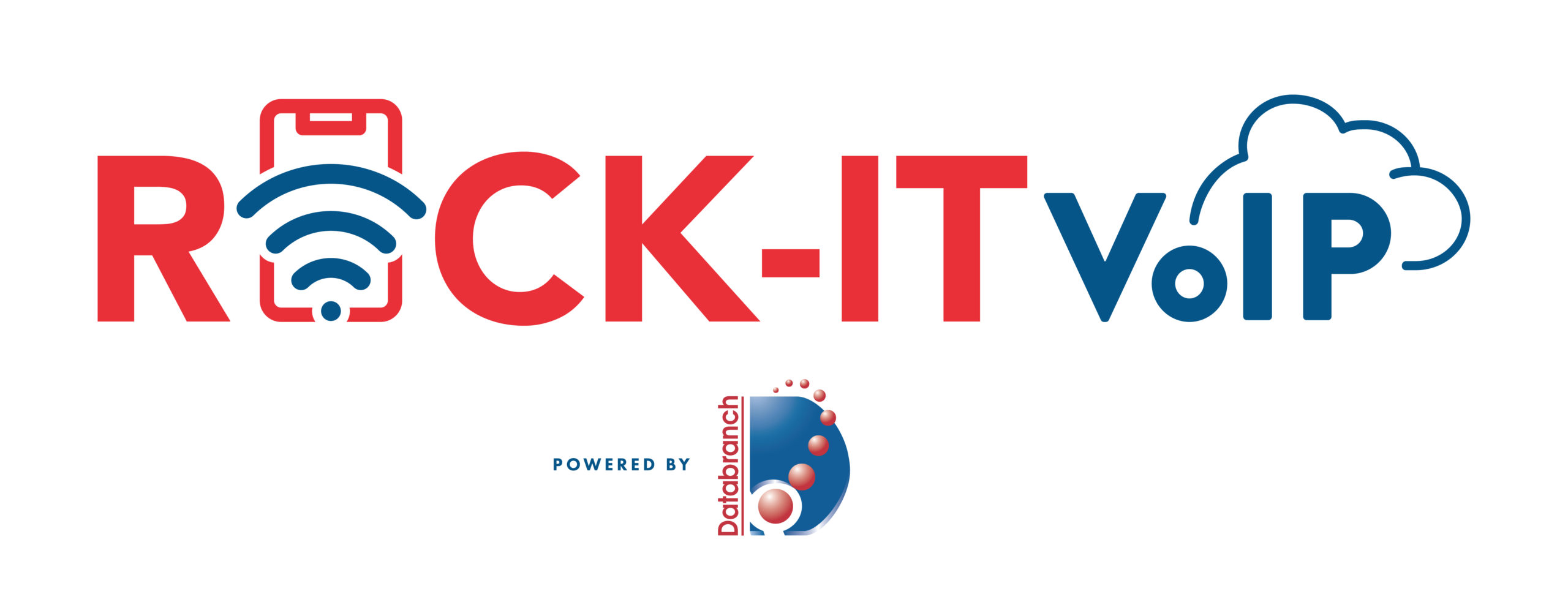
Bring your own device (BYOD) is a concept that took hold after the invention of the smartphone. When phones got smarter, software developers began creating apps for those phones. Over time, mobile device use has overtaken desktop use at work.
According to Microsoft, mobile devices make up about 60% of the endpoints in a company network. They also handle about 80% of the workload. But they’re often neglected when it comes to strong cybersecurity measures.
This is especially true with employee-owned mobile devices. BYOD differs from corporate-owned mobile use programs. Instead of using company tools, employees are using their personal devices for work. Many businesses find this the most economical way to keep their teams productive.
Purchasing phones and wireless plans for staff is often out of reach financially. It can also be a pain for employees to carry around two different devices, personal and work.
It’s estimated that 83% of companies have some type of BYOD policy.
You can run BYOD securely if you have some best practices in place. Too often, business owners don’t even know all the devices that are connecting to business data. Or which ones may have data stored on them.
Here are some tips to overcome the security and challenges of BYOD. These should help you enjoy a win-win situation for employees and the business.
Define Your BYOD Policy
If there are no defined rules for BYOD, then you can’t expect the process to be secure. Employees may leave business data unprotected. Or they may connect to public Wi-Fi and then enter their business email password, exposing it.
If you allow employees to access business data from personal devices, you need a policy. This policy protects the company from unnecessary risk. It can also lay out specifics that reduce potential problems. For example, detailing the compensation for employees that use personal devices for work.
Keep Your Policy “Evergreen”
As soon as a policy gets outdated, it becomes less relevant to employees. Someone may look at your BYOD policy and note that one directive is old. Because of that, they may think they should ignore the entire policy.
Make sure that you keep your BYOD policy “evergreen.” This means updating it regularly if any changes impact those policies.
Use VoIP Apps for Business Calls
Before the pandemic, 65% of employees gave their personal phone numbers to customers. This often happens due to the need to connect with a client when away from an office phone. Clients also may save a personal number for a staff member. For example, when the employee calls the customer from their own device.
Customers having employees’ personal numbers is a problem for everyone. Employees may leave the company and no longer answer those calls. This could result in the customer may not realize why and could get aggravated.
You can avoid the issue by using a business VoIP phone system. These services have mobile apps that employees can use. VoIP mobile apps allow employees to make and receive calls through a business number.
Hosted VoIP also offers flexibility and scalability to accommodate for fluctuations and growth in your business, and we can service locations nationwide. With Rock-IT VoIP, we also port your numbers so they stay the same and handle any upgrades, maintenance, and programming!
Create Restrictions on Saved Company Data
Remote work has exasperated the security issue with BYOD. While BYOD may have meant mobile devices in the past, it now means computers too. Remote employees often will use their own PCs when working outside the office.
No matter what the type of device, you should maintain control of business data. It’s a good idea to restrict the types of data that staff can store on personal devices. You should also ensure that it’s backed up from those devices.
Require Device Updates
When employee devices are not updated or patched, they invite a data breach. Any endpoint connected to your network can enable a breach. This includes those owned by employees.
It can be tricky to ensure that a device owned by an employee is kept updated. Therefore, many businesses turn to endpoint management solutions. An endpoint device manager can push through automated updates. It also allows you to protect business data without intruding on employee privacy.
The monitoring and management capabilities of these tools improve security. This includes the ability to safelist devices. Safelisting can block devices not added to the endpoint manager.
Include BYOD in Your Offboarding Process
If an employee leaves your company, you need to clean their digital trail. Is the employee still receiving work email on their phone? Do they have access to company data through persistent logins? Are any saved company passwords on their device?
These are all questions to ask when offboarding a former staff member. You should also make sure to copy and remove any company files on their personal device. Additionally, ensure that you deauthorize their device(s) from your network.
As a managed client, Databranch will handle the offboarding process to help make the transition smooth and simple.
Let Us Help You Explore Endpoint Security Solutions
We can help you explore solutions to secure a BYOD program. We’ll look at how your company uses personal devices at your business and recommend the best tools. Contact us today at 716-373-4467 x 115 or [email protected] to speak with one of our experienced team members.
Article used with permission from The Technology Press.
Read More

Software vulnerabilities are an unfortunate part of working with technology. A developer puts out a software release with millions of lines of code. Then, hackers look for loopholes that allow them to breach a system through that code.
The developer issues a patch to fix the vulnerability but it’s not long before a new feature update causes more. It’s like a game of “whack-a-mole” to keep your systems secure.
Keeping up with new vulnerabilities is one of the top priorities of IT management firms. It’s important to know which software and operating systems are being attacked.
Without ongoing patch and update management, company networks are vulnerable while these attacks are completely avoidable. 82% of U.S. cyberattacks in Q1 of 2022 were due to exploiting patchable vulnerabilities.
What new vulnerabilities are lurking in products from Microsoft, Google, Adobe, and others? We’ll go through several. These were recently noted in a warning by the Cybersecurity and Infrastructure Security Agency (CISA).
Make Sure to Patch Any of These Vulnerabilities in Your Systems
Microsoft Vulnerabilities
Microsoft vulnerabilities include those in three of its products. Internet Explorer (IE) is one of them. Microsoft discontinued IE in June of 2022. You should remove this from any computers that still have it installed.
You’ll see the acronym “CVE” used in the vulnerability names. This is an industry-standard naming structure. It stands for Common Vulnerabilities and Exposures.
Here is a rundown of these vulnerabilities and what a hacker can do:
- CVE-2012-4969: This Internet Explorer vulnerability allows the remote execution of code. This is a “critical” vulnerability because of the damage it enables. Hackers can release this via a website. Thus, formerly safe sites can become phishing sites when hackers exploit this loophole.
- CVE-2013-1331: This is a flaw in the code for Microsoft Office 2003 and Office 2011 for Mac. It enables hackers to launch remote attacks. It exploits a vulnerability in Microsoft’s buffer overflow function. This allows hackers to execute dangerous code remotely.
- CVE-2012-0151: This issue impacts the Authenticode Signature Verification function of Windows. It allows user-assisted attackers to execute remote code on a system. “User-assisted” means that they need the user to assist in the attack. Such as by opening a malicious file attachment in a phishing email.
Google Vulnerabilities
Google Chrome and applications built using Google’s Chromium V8 Engine are also on the list. These applications are targets of the following vulnerabilities.
- CVE-2016-1646 & CVE-2016-518: These both allow attackers to conduct denial of service attacks. They do this against websites through remote control. This means they can flood a site with so much traffic that it crashes.
- Those aren’t the only two code flaws that allow hackers to crash sites this way. CVE-2018-17463 and CVE-2017-5070 are two others that both do the same thing. Like all these others, they both have patches already issued that users can install to fix these holes.
Adobe Vulnerabilities
People use Adobe Acrobat Reader widely to share documents. It makes it easy to share them across different platforms and operating systems. But it’s also a tool that’s on this list of popular vulnerabilities.
- CVE-2009-4324: This is a flaw in Acrobat Reader that allows hackers to execute remote code via a PDF file. This is why you can’t trust that a PDF attachment is going to be safer than other file types. Remember this when receiving unfamiliar emails.
- CVE-2010-1297: This memory corruption vulnerability. It allows remote execution and denial of service attacks through Adobe Flash Player. Like IE, the developer retired Flash Player. It no longer receives support or security updates. You should uninstall this from all PCs and websites.
-
Netgear Vulnerability
Netgear is a popular brand of wireless router. The company also sells other internet-connected devices. These are also vulnerable, due to the following flaws.
- CVE-2017-6862: This flaw allows a hacker to execute code remotely. It also enables bypassing any needed password authentication. It’s present in many different Netgear products.
Cisco Vulnerability
- CVE-2019-15271: This is a vulnerability in the buffer overflow process of Cisco RV series routers. It gives a hacker “root” privileges. This means they can basically do anything with your device and execute any code they like.
Patch & Update Regularly!
These are a few of the security vulnerabilities listed on the CISA list. You can see all 36 that were added here.
How do you keep your network safe from these and other vulnerabilities? You should patch and update regularly. Work with a trusted IT professional to manage your device and software updates. This ensures you don’t have a breach waiting to happen lurking in your network.
Automate Your Cybersecurity Today
Patch and update management is just one way that we can automate your cybersecurity. Contact us today at 716-373-4467 x 115, [email protected] or fill out the form below to learn how else we can help by scheduling a consultation today.
Article used with permission from The Technology Press.
Read More

After being the main entry to the internet in the late 1990s and early 2000s, Internet Explorer (IE) is gone. As of June 15, 2022, Microsoft dropped the web browser from support.
IE ushered in the age of connection to the world in 1995 and held a majority of the browser market share for many years. But the release of newer technologies like Google Chrome made it less relevant.
In 2014, Internet Explorer still held about 59% of the global market share, with Chrome at 21%. But just two years later, IE lost its top spot to Chrome and trailed behind another newcomer, Safari.
In 2015, the writing was already on the wall when Microsoft released a new browser, Edge. With Edge destined to take IE’s place as the official browser installed on Windows systems.
It’s inevitable, the longer technology is driving work and home life, that we’re going to lose some of our favorites. Adobe Flash Player is another technology that used to be widely used and is now gone.
So, now that IE has reached its end of life (EOL), what happens next?
Microsoft Will Redirect Users to IE Mode in Edge
According to Microsoft, now that IE is officially out of support it will redirect users. Over the next few months, a new experience will happen. Those opening this outdated browser will instead land in Microsoft Edge with IE mode.
To ease the transition away from Internet Explorer, Microsoft added IE Mode to Edge. This mode makes it possible for organizations to still use legacy sites that may have worked best in IE. It uses the Trident MSHTML engine from IE11 to do this.
When in IE mode, you’ll still see the Internet Explorer icon on your device. But if you open it, you’ll actually be in Microsoft Edge
Microsoft Will Be Removing Internet Explorer Icons in the Future
Microsoft isn’t yet getting rid of the IE icons that appear in places like the taskbar and Start menu on Windows, but it will in a future update. This means users can expect to see those removed at some point.
Edge Will Import Browser Data from IE
What about your favorites, saved passwords, and other settings that you have in IE? Microsoft Edge will import these from Internet Explorer for you, so they’re not lost. This will include things like your browsing history and other data stored in the browser. You’ll then be able to access these in the Microsoft Edge’s settings area.
With IE Retired, What Do You Need to Do Now?
Uninstall the Browser
It’s risky to keep older technology that is no longer supported on your system. Cybercriminals love to exploit older tools that are not receiving any security updates. This leaves an open invitation to breach your network. Manufacturers are never going to address these because they retired the software.
Outdated technology costs enterprises approximately 47% more when they suffer a data breach. As compared to those with updated tools.
You should transition your stored information to Microsoft Edge (or another trusted browser). Then uninstall IE from your device or devices.
Ensure Employees Know How to Use IE Mode in Edge
A scenario that businesses want to avoid is what happened to many organizations in Japan. Several government and corporate users weren’t prepared for the retirement of IE.
It was reported that IT and engineering departments received many calls for help. This was due to unpreparedness for the browser’s demise. Although it came with warnings, it was a shock to many that used legacy sites that need IE to work. This included the customers of government agencies, financial institutions, and other organizations.
This left them scrambling to try to figure out what to do at the last minute. They still needed access to employee attendance management, and other online tools.
Of course, with IE mode in Edge, this transition didn’t need to be so chaotic. But without communication or training, more than 20% of affected users hadn’t figured out what to do.
Make sure you communicate with your team what to do. Companies can automate IE mode for their users so that it launches automatically.
Train Employees on Microsoft Edge Features
Microsoft Edge has a lot of benefits over IE and other browsers. It’s faster and more responsive than Internet Explorer. It also has comprehensive security controls (including password breach monitoring) and has unique features such as “collections.”
But with all new tools, if you want employees to use them proficiently, they need to have a chance to learn them. Take the time to transition right, and have your employees trained on Edge.
Need Help Upgrading Your Digital Tools?
You don’t have to panic when a technology you use retires. We can help you upgrade well ahead of any deadlines. Reach out today at 716-373-4467 x 115 or [email protected] to schedule a technology consultation.
Article used with permission from The Technology Press.
Read More

Heads Up Financial Institutions!
The Federal Trade Commission (FTC) announced the first cybersecurity updates to the Gramm Leach-Bliley Act (GLBA) Safeguards Rule since 2003. The new rule strengthens the required security safeguards for customer information. This includes formal risk assessments, access controls, regular penetration testing and vulnerability scanning, and incident response capabilities, among other things.
Most of these changes go into effect in December 2022, to provide organizations time to prepare for compliance. Below, details the changes in comparison to the previous rule.
Background on the Safeguards Rule
GLBA requires, among other things, a wide range of “financial institutions” to protect customer information. Enforcement for GLBA is split up among several different federal agencies, with FTC jurisdiction covering non-banking financial institutions in the Safeguards Rule. Previously, the Safeguards Rule left the implementation details of several aspects of the information security program up to the financial institution, based on its risk assessment.
The Safeguards Rule broad definition of “financial institutions” includes non-bank businesses that offer financial products or services — such as retailers, automobile dealers, mortgage brokers, non-bank lenders, property appraisers, tax preparers, and others. The definition of “customer information” is also broad, to include any record containing non-public personally identifiable information about a customer that is handled or maintained by or on behalf of a financial institution.
Updates to the Safeguards Rule
Many of the other updates’ concern strengthened requirements on how financial institutions must implement aspects of their security programs. Below is a short summary of the changes.
Overall Security Program
Current rule: Financial institutions must maintain a comprehensive, written information security program with administrative, technical, and physical safeguards to ensure the security, confidentiality, and integrity of customer information.
Updated rule: The updated rule now requires the information security program to include the processes and safeguards listed below (i.e., risk assessment, security safeguards, etc.).
Effective date: December 2022
Risk Assessment
Current rule: Financial institutions are required to identify internal and external risks to security, confidentiality, and integrity of customer information. The risk assessment must include employee training, risks to information systems, and detecting and responding to security incidents and events.
Updated rule: The update includes more specific criteria for what the risk assessment must include. This includes criteria for evaluating and categorizing of security risks and threats, and criteria for assessing the adequacy of security safeguards. The risk assessment must describe how identified risks will be mitigated or accepted. The risk assessment must be in writing.
Effective date: December 2022
Security Safeguards
Current rule: Financial institutions must implement safeguards to control the risks identified through the risk assessment. Financial institutions must require service providers to maintain safeguards to protect customer information.
Updated rule: The updated rule requires that the safeguards must include
- Access controls, including providing the least privilege;
- Inventory and classification of data, devices, and systems;
- Encryption of customer information at rest and in transit over internal networks;
- Secure development practices for in-house software and applications;
- Multi-factor authentication;
- Secure data disposal;
- Change management procedures; and
- Monitoring activity of unauthorized users and detecting unauthorized access or use of customer information.
Effective date: December 2022
Testing and Evaluation
Current rule: Financial institutions must regularly test or monitor the effectiveness of the security safeguards and make adjustments based on the testing.
Updated rule: Regular testing of safeguards must now include either continuous monitoring or periodic penetration testing (annually) and vulnerability assessments (semi-annually).
Effective date: December 2022
Incident Response
Current rule: Financial institutions must include cybersecurity incident detection and response in their risk assessments and have safeguards to address those risks.
Updated rule: Financial institutions are required to establish a written plan for responding to any security event materially affecting confidentiality, integrity, or availability of customer information.
Effective date: December 2022
Workforce and Personnel
Current rule: Financial institutions must designate an employee to coordinate the information security program. Financial institutions must select service providers that can maintain security and require service providers to implement the safeguards.
Updated rule: The rule now requires designation of a single “qualified individual” to be responsible for the security program. This can be a third-party contractor. Financial institutions must now provide security awareness training and updates to personnel. The rule now also requires periodic reports to a Board of Directors or governing body regarding all material matters related to the information security program.
Effective date: December 2022
Scope of Coverage
Updated rule: The FTC update expands on the definition of “financial institution” to require “finders” — companies that bring together buyers and sellers — to follow the Safeguards Rule. However, financial institutions that maintain customer information on fewer than 5,000 consumers are exempt from the requirements of a written risk assessment, continuous monitoring or periodic pen testing and/or vulnerability scans, incident response plan, and annual reporting to the Board.
Effective date: November 2021 (unlike many of the other updates, this item was not delayed for a year)
Incident Reporting
In addition to the above, the FTC is also considering requirements that financial institutions report cybersecurity incidents and events to the FTC. Similar requirements are in place under the Cybersecurity Regulation at the New York Department of Financial Services. If the FTC moves forward with these incident reporting requirements, financial institutions could expect the requirements to be implemented in early 2023.
Financial institutions with robust security programs will already be performing many of these practices. For them, the updated Safeguards Rule will not represent a sea change in internal security operations. However, by making these security practices a formal regulatory requirement, the updated Safeguards will make accountability and compliance even more important.
Interested in speaking with an experienced team member about the material covered in this article? Contact us today at 716-373-4467 x 115 or [email protected] to schedule your appointment.
Read More

One constant about technology is that it changes rapidly. Tools that were once staples, like Internet Explorer and Adobe Flash, age out and get replaced by new tools. Continuing to use discontinued technology can leave computers and networks vulnerable to attacks.
While older technology may still run fine on your systems that doesn’t mean that it’s okay to use. One of the biggest dangers of using outdated technology is that it can lead to a data breach.
Outdated software and hardware no longer receive vital security updates. Updates often patch newly found and exploited system vulnerabilities. No security patches means a device is a sitting duck for a cybersecurity breach.
Approximately 1 in 3 data breaches are due to unpatched system vulnerabilities.
Important reasons to keep your technology updated to a supported version are:
- Reduce the risk of a data breach or malware infection
- Meet data privacy compliance requirements
- To keep a good reputation and foster customer trust
- To be competitive in your market
- To mitigate hardware and software compatibility issues
- To enable employee productivity
Older systems are clunky and get in the way of employee productivity. The efficiency of your employee is only as good as the technology they are working on. Slower machines mean a decrease in progress which can negatively impact your business over time.
Dig you know that 49% of surveyed workers say they would consider leaving their jobs due to poor technology?
Following is a list of outdated technology tools that you should replace as soon as possible. Are any of these still in use within your business?
Get Rid of This Tech Now If You’re Still Using It
1) Internet Explorer
Internet Explorer (IE) used to be the number one browser in the world. But, over time, Google Chrome and other browsers shadowed it out. Including its replacement, Microsoft Edge.
Microsoft began phasing out IE with the introduction of Microsoft Edge in 2015. In recent years, fewer applications have been supporting use in IE. The browser loses all support beginning on June 15, 2022.
2) Adobe Flash
Millions of websites used Adobe Flash in the early 2000s. But other tools can now do the animations and other neat things Flash could do. This made the tool obsolete, and Adobe ended it.
The Adobe Flash Player lost all support, including security updates, as of January 1, 2021. Do you still have this lingering on any of your computers? If so, you should uninstall the browser plugin and any Flash software.
3) Windows 7 and Earlier
Windows 7 was a very popular operating system, but it’s now gone the way of the dinosaur. Replacements, Windows 10 and Windows 11 are now in widespread use. The Windows 7 OS lost support on January 14, 2020.
While it may still technically run, it’s very vulnerable to hacks. Microsoft Windows OS is also a high-value target for hackers. So, you can be sure they are out there looking for systems still running this obsolete version of Windows.
4) macOS 10.14 Mojave and Earlier
Because of the cost of iMacs and MacBooks, people tend to hang onto them as long as possible. Once these devices get to a certain point, updates no longer work. This leaves the hardware stuck on an older and non-supported macOS version.
If you are running macOS 10.14 Mojave or earlier, then your OS is no longer supported by Apple and you should consider an upgrade.
5) Oracle 18c Database
If your business uses Oracle databases, then you may want to check your current version. If you are running the Oracle 18C Database, then you are vulnerable. Breaches can easily happen due to unpatched system vulnerabilities.
The Oracle 18C Database lost all support in June of 2021. If you have upgraded, then you’ll want to keep an eye out for another upcoming end-of-support date. Both Oracle 19C and 21C will lose premiere support in April of 2024.
6) Microsoft SQL Server 2014
Another popular database tool is Microsoft’s SQL. If you are using SQL Server 2014, then mainstream support has already ended. Plus, in July of 2024 all support, including security updates will stop.
This gives you a little more time to upgrade before you’re in danger of not getting security patches. However, it is better to upgrade sooner rather than later. This leaves plenty of time for testing and verification of the upgrade.
Get Help Upgrading Your Technology & Reducing Risk
Upgrades can be scary, especially if everything has been running great. You may be afraid that a migration or upgrade will cause issues. We can help you upgrade your technology smoothly and do thorough testing afterward. You can also contact Databranch today at 716-373-4467, [email protected] , or fill in the form below to set up a vulnerability assessment.
Article used with permission from The Technology Press.
Read More













